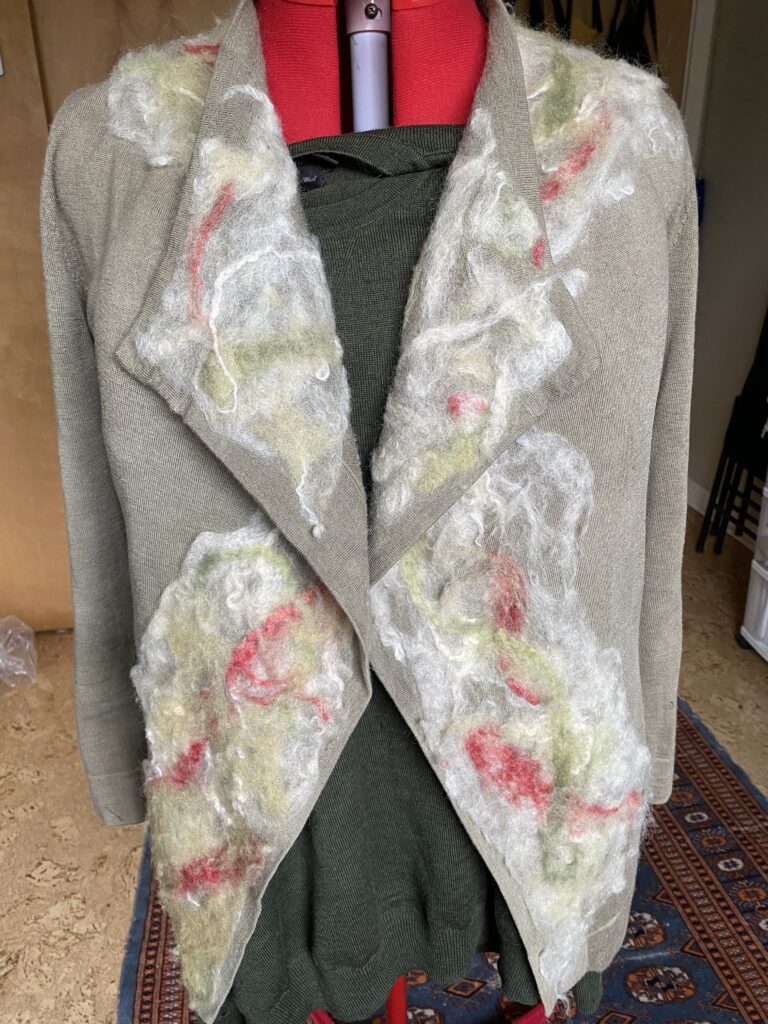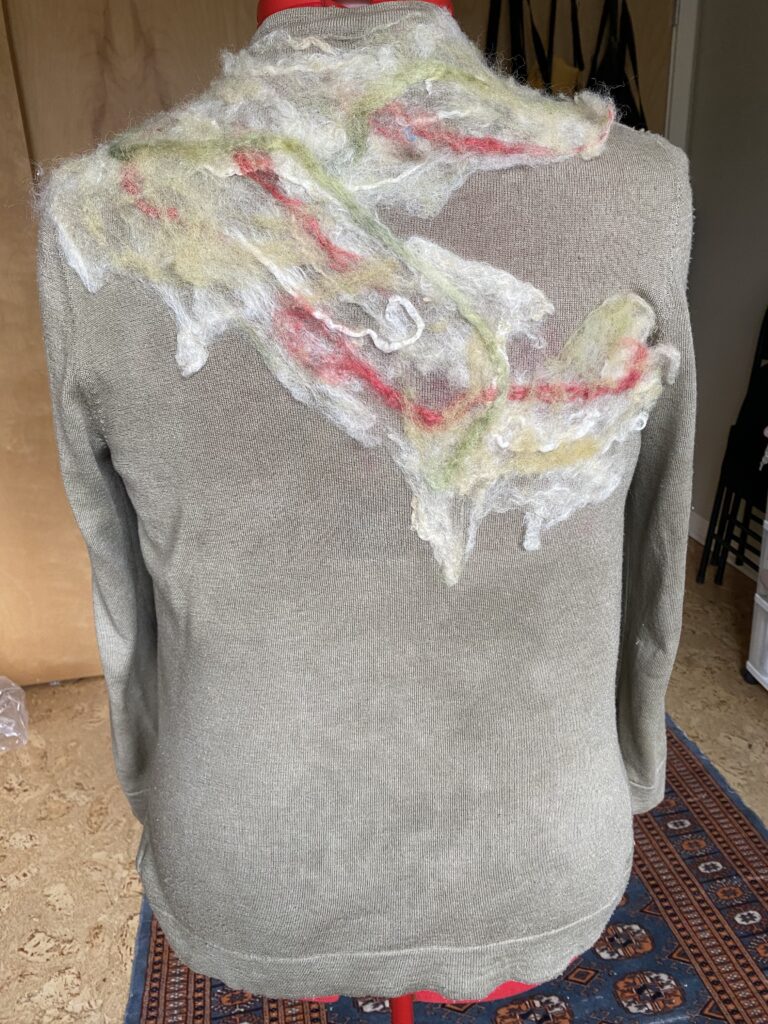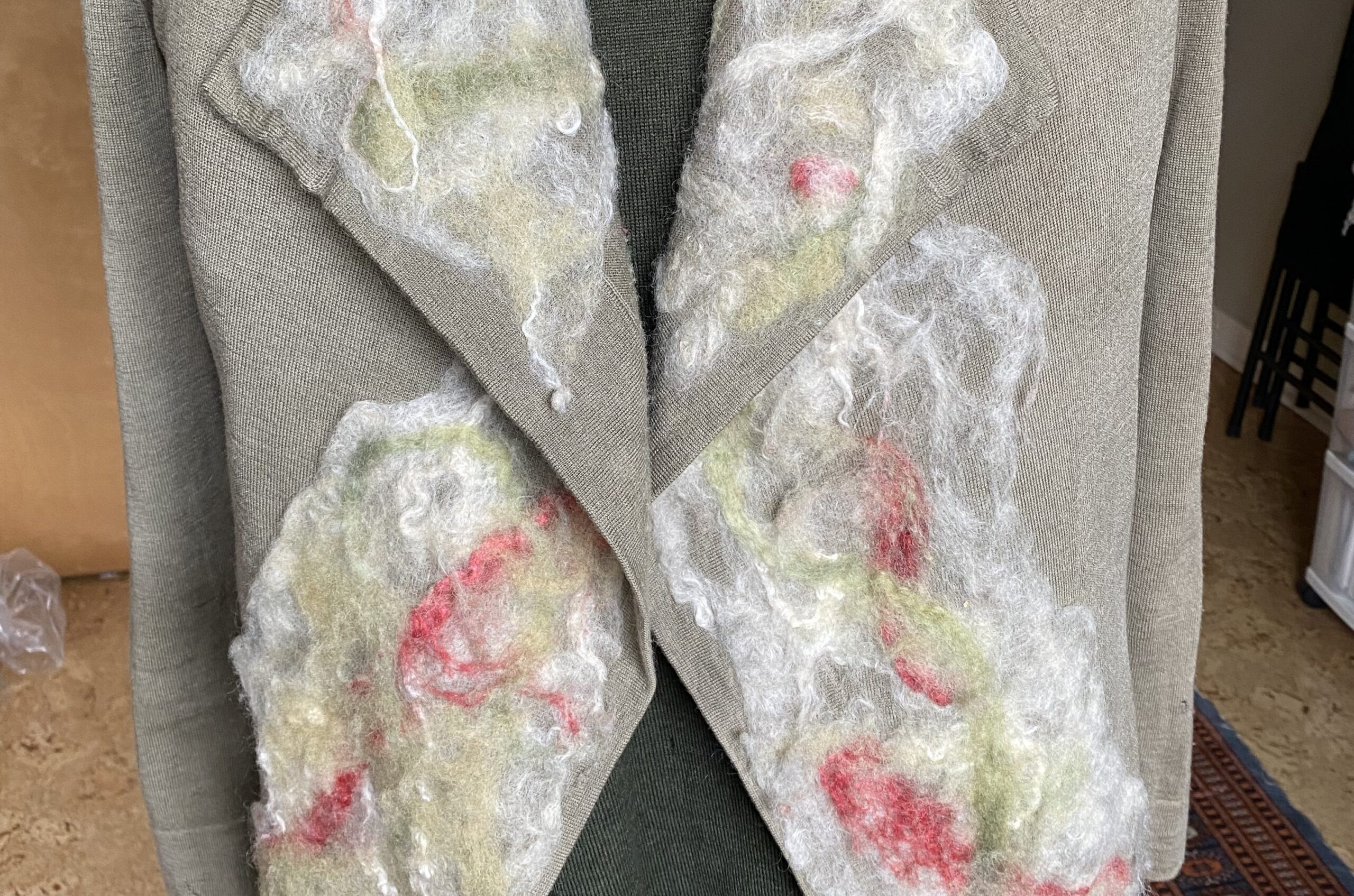We already have a lot of textiles on Vancouver Island, most imported from outside our region. While we don’t currently have commercial fabric production here, our closets and thrift shops are a great source of materials just waiting for creative energy to strike. In Amy’s story (below), she uses her skills in dyeing and surface design to create a special, one-of-a-kind garment, while breathing new life into a damaged cardigan. A great example of our winter skill-building challenge: refashion an existing textile. And she brought in her love of mushroom dyes as well!

by Amy Crook
I’ve been inspired lately to combine my love of dyeing with mushrooms and upcycling clothing. I found this cashmere sweater at a local thrift store. It was an oatmeal color (not my favorite) and had a few moth holes, but who can pass up a nice cashmere sweater under $10? It was fall and having a “new to me” sweater inspired me to think creatively. I decided to dye the sweater with one of my favorite mushrooms, the Velvet Pax Tapinella atrotomentosa, resulting in the nice olive green/grey color. Then to spice it up a bit (and cover the moth holes), I needle-felted the decorative wool onto the lapels and back of the sweater. It’s held up great to hand washing and if I find more holes, I know how I’ll fix them.


